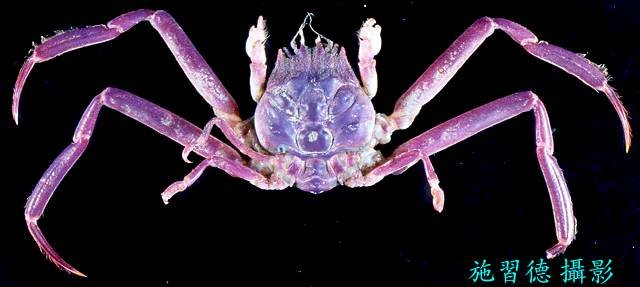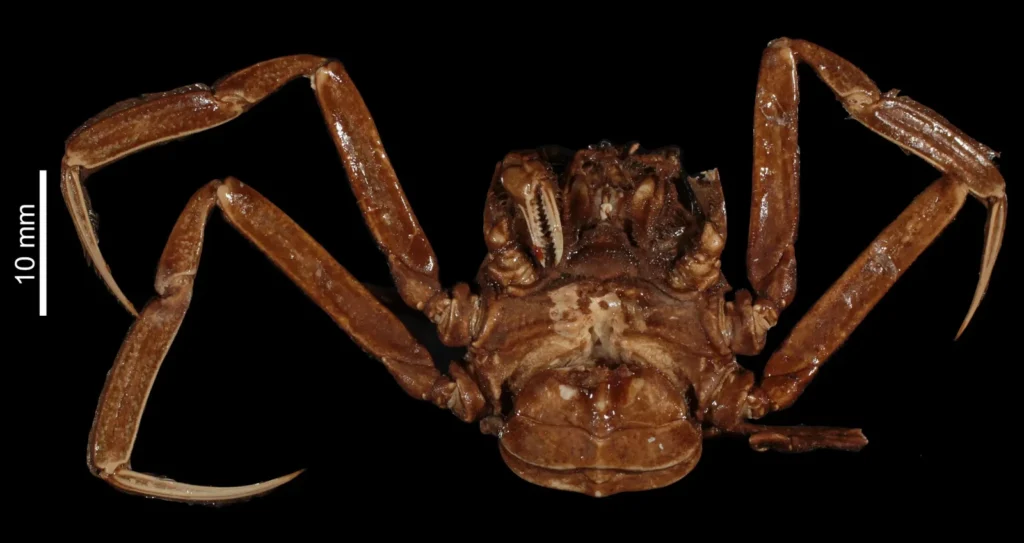Heikegani crab (Heikeopsis japonica), also known as the "samurai crab," is a unique species of sea crab that attracts attention for its unusual carapace that resembles a human face-often perceived as a samurai mask. This crab is part of Japanese culture, myths, and has even become an example for scientific research in the field of evolution.

Classification
• The Kingdom: Animals (Animalia)
• Type: Arthropods (Arthropoda)
• Subtype: Crustaceans (Crustacea)
• Class: Higher crayfish (Malacostraca)
• Row: Decimals (Decapoda)
• Family: Atelecyclidae
• Gender: Heikeopsis
• View: Heikeopsis japonica
Appearance
📏 Sizes
- The carapace is about 3-4 cm long
🎨 Description
- Dome-shaped carapace with distinct symmetrical tubercles and depressions
- These features create the impression of a face - eyes, nose, mouth
- The color is usually reddish brown or orange
- Has thin limbs and small pincers
Range and habitat
🌍 Area
- Coastal waters of Japan (especially the Pacific coast, in particular the region near Suo Bay)

🌿 Living environment
- Sandy or muddy seabed at a depth of up to 50 m
- Often found near the coast and in bays
Behavior
🔍 Activity
- Predominantly benthic lifestyle
- Leads a hidden life, burrowing into the soil
- Non-aggressive, rarely interacts with other species
🧠 Cultural role
- The name comes from the legendary Heike clan, whose warriors died in the naval battle of Dannaura (1185).
- According to a Japanese legend, the souls of samurai moved into these crabs
- It often appears in Japanese folklore, poetry and art
Food
🍽️ Diet
- Detritoid (feeds on organic residues)
- Consumes small invertebrates, algae particles, plankton from the bottom
- Not an active predator
Reproduction
🧬 Reproduction
- Reproduction occurs in the warm season
- Females carry eggs under the abdomen, like other decapods
- Juveniles pass through larval stages in the water column, then settle to the bottom
Type and threat status
⚠️ Protection status
- The species is not endangered
- It is not commercially important, but sometimes suffers from overfishing as a "bycatch" in fisheries
🌊 Significance for science
- Famous thanks to an example from Carl Sagan's book - the crab is used as an illustration of the phenomenon of unconscious artificial selection (people did not catch crabs with a "face", which contributed to their survival)

Interesting facts
✔️ The crab carapace has become a symbol of "evolution through cultural intervention"
✔️ His "face" is not real, but a coincidence of natural morphology with human imagination
✔️ Despite its popularity in culture, it is rarely found in aquariums
✔️ Images of the crab are often used in popular science, folklore, anime, and books
Conclusion
The Heikegani crab is a unique example of a combination of nature, culture, and science. Its unusual appearance not only inspires legends, but also becomes a reason for deep reflection on evolution, artificial selection, and our perception of the world around us. The little crab with the "face of a samurai" reminds us how deeply nature is intertwined with human history and imagination.